Texas Instruments CD4541BE +BOM
The Texas Instruments CD4541BE is a versatile programmable timer/oscillator IC designed for precise timing and clock generation. It supports both RC network (for cost-effective solutions) and crystal oscillator (for high-precision applications) inputs, with adjustable frequency division ratios (up to 65536) via pins A/B, enabling timing ranges from microseconds to hours. Featuring a wide operating voltage range (3V–18V), low static current, and configurable duty cycle (50% symmetric or asymmetrical), it suits low-power embedded systems, industrial controls, and consumer electronics. Modes include single-shot (pulse once) or cyclic (continuous waveform), with outputs compatible with CMOS/TTL logic. Housed in 14-pin DIP/SOIC packages, it integrates easily with CD4000-series devices, offering reliability and flexibility for timing-critical applications.
Texas Instruments CD4541BE's Features
Frequency/Period Programmability: Oscillation frequency is configurable via external resistors (R), capacitors (C), or crystal oscillators, enabling wide-range timing parameter adjustment (ranging from microseconds to hours).
Adjustable Frequency Division Ratio: Built-in frequency divider allows setting output signal division coefficients through input pins or programming, generating clock signals of different frequencies.
Supports RC oscillator (external RC network) or crystal oscillator input, catering to different precision and stability requirements (crystal mode for high-precision scenarios, RC mode for cost-effective applications).
Integrated voltage regulator or biasing circuit optimizes compatibility with external components.
Typical CMOS process feature, supporting wide voltage input (e.g., 3V to 15V or higher), compatible with diverse power systems (battery-powered devices or industrial-grade voltage environments).
Extremely low quiescent current, ideal for battery-driven portable devices or energy-efficient applications (e.g., IoT sensors, embedded systems).
Supports standby or sleep modes to further reduce power consumption.
Output signal duty cycle is configurable (e.g., 50% symmetrical waveform or asymmetrical waveforms), suitable for PWM control, signal modulation, and other scenarios.
Provides complementary outputs (e.g., synchronized high/low level signals) or single-ended outputs, compatible with different logic levels (CMOS/TTL).
Moderate output drive capability allows direct driving of LEDs, relays, or coupling to other integrated circuits.
Built-in overload or short-circuit protection mechanisms (in some models) enhance circuit robustness.
Wide operating temperature range (e.g., commercial grade 0°C to 70°C, industrial grade -40°C to 85°C), adapting to various environmental conditions.
Common package types: DIP (Dual In-line Package), SOIC (Small Outline Integrated Circuit), SSOP (Shrink Small Outline Package), etc., facilitating PCB layout and soldering.
Pins are compatible with traditional CD4000 series logic devices, enabling seamless integration with other digital circuits.
Texas Instruments CD4541BE's Applications
Consumer Electronics:
Timers for household appliances (microwaves, washing machines, coffee makers) to control operation durations.
Countdown timers in digital clocks, kitchen timers, or portable devices (e.g., fitness trackers for interval training).
Industrial Control:
Sequential timing in manufacturing processes (e.g., conveyor belt delays, machine cycle synchronization).
Safety interlocks or fault reset timers in industrial equipment.
Digital Systems:
Stable clock provider for microcontrollers, sensors, or communication modules (e.g., generating UART baud rates or I2C/SPI clock signals).
Pulse generators for LED blinking, display refresh, or motor commutation (e.g., stepper motor step timing).
Communication Equipment:
Clock synchronization in modems, routers, or serial communication interfaces.
Low-frequency signal sources for wireless sensor networks (WSNs) or RFID systems.
Battery-Powered Devices:
Sleep/wake cycle controllers in IoT sensors, wearables, or remote monitoring devices to minimize power consumption.
Periodic data sampling timers for environmental sensors (temperature, humidity, motion).
Portable Electronics:
Energy-efficient timing in remote controls, e-readers, or low-power Bluetooth (BLE) devices.
Power Circuits:
Voltage regulator timing (e.g., soft-start delays or overvoltage protection timeout).
Sequential power-up/down control for multi-rail systems (e.g., FPGA/ASIC power supply sequencing).
Motor & LED Control:
Adjustable PWM signals for motor speed regulation (e.g., small DC motors in robotics) or LED dimming (constant-current LED drivers).
Industrial Automation:
Sensor data acquisition timing (e.g., periodic analog-to-digital conversion in PLCs).
Fault detection timers for machinery (e.g., overheat/overload shutdown delays).
Automotive Systems:
Interior lighting control (gradual on/off timing) or dashboard display backlight dimming.
Low-power wake-up timers for vehicle subsystems (e.g., keyless entry, tire pressure monitoring).
DIY Projects:
Low-cost timing solutions for hobbyist circuits (e.g., LED chasers, simple frequency counters).
Teaching platforms for learning digital logic, RC oscillator principles, or timing circuit design.
Medical Devices:
Timed drug delivery systems or infusion pumps for precise dosage control.
Low-power heartbeat monitors or sleep apnea devices requiring long battery life.
Flexibility: Programmable frequency/period via external RC/crystal and adjustable duty cycle suit diverse timing needs.
Low Power: Ideal for battery-driven or energy-efficient systems (e.g., IoT, wearables).
Wide Voltage Range: Compatible with both low-voltage (3V) battery systems and industrial (15V) environments.
Reliability: Robust operation across temperature ranges and built-in protections for harsh environments.
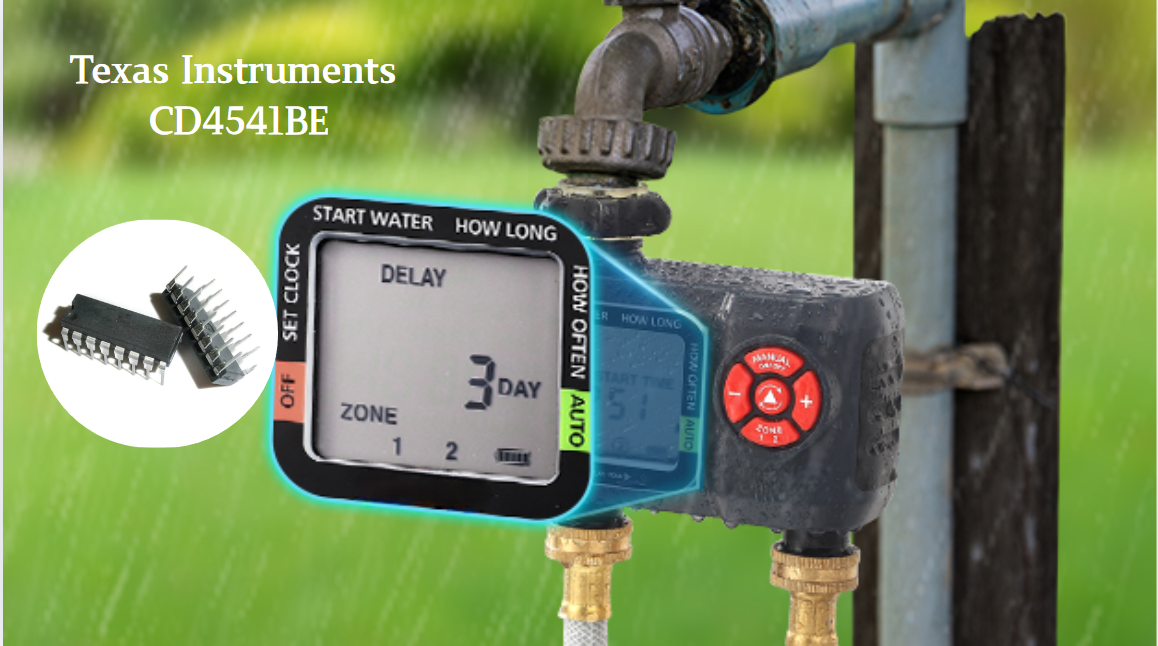
Texas Instruments CD4541BE's Attributes
| Technology family | CD4000 | Bits (#) | 1 |
| Supply voltage (min) (V) | 3 | Supply voltage (max) (V) | 18 |
| Input type | Standard CMOS | Output type | Push-Pull |
| Supply current (max) (µA) | 100 | IOL (max) (mA) | 4 |
| IOH (max) (mA) | -4 | Operating temperature range (°C) | -55 to 125 |
| Rating | Catalog |
Texas Instruments CD4541BE's Datasheet
Texas Instruments CD4541BE's Symbol, Footprint and 3D Model
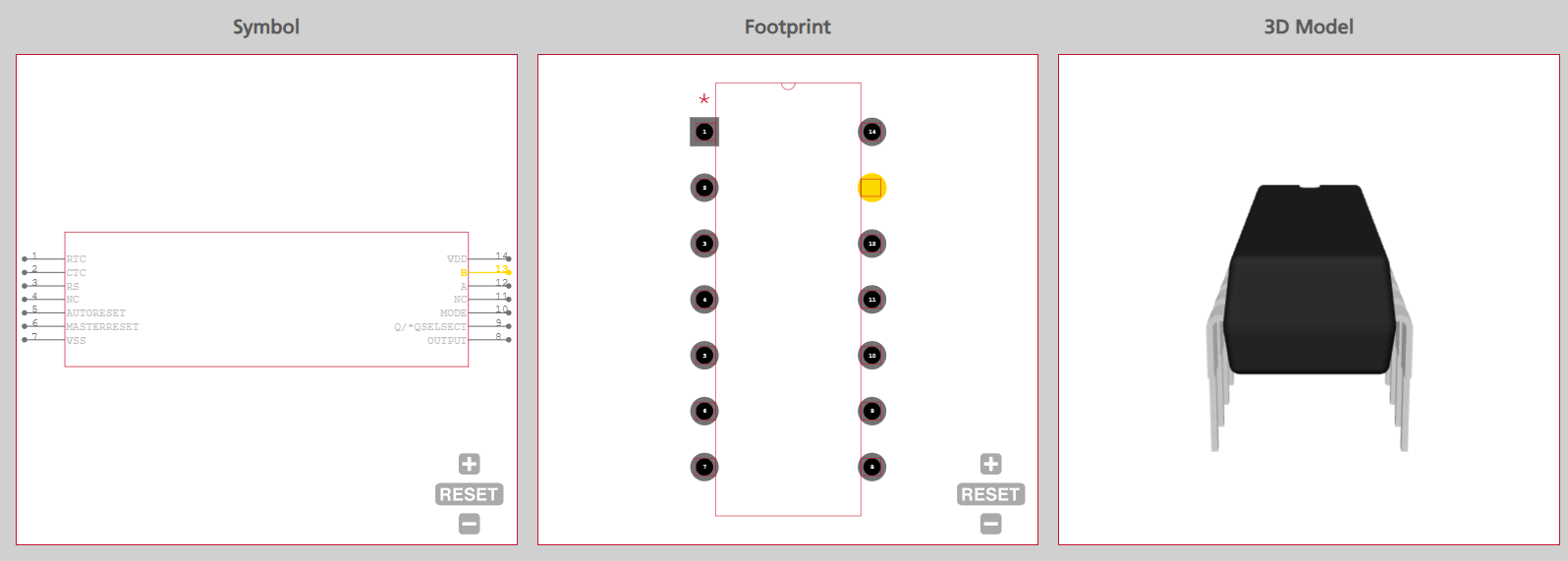
Pin # | Name | Function |
|---|---|---|
1 | RTC | External resistor (R<sub>TC</sub>) connection for oscillator timing control. |
2 | CTC | External capacitor (C<sub>TC</sub>) connection for oscillator timing control. |
3 | RS | Reset input (active-high): Resets the counter and output to their initial states. |
4 | NC | No connection (unused pin). |
5 | AR | Auto-Reset input (active-high): Enables automatic reset after power-up. If tied to V<sub>DD</sub>, manual reset via Pin 6 is required 4. |
6 | MR | Master Reset input (active-high): Manually resets the counter and output. |
7 | V<sub>SS</sub> | Ground (0V) supply. |
8 | Q | Primary output: Changes state based on timer/counter operation. |
9 | SELECT | Output state selection: |
10 | MODE | Operating mode selection: |
11 | NC | No connection (unused pin). |
12 | A | Division ratio programming input A: Configures the counter’s division factor in conjunction with Pin 13 34. |
13 | B | Division ratio programming input B: Works with Pin 12 to set the division factor 34. |
14 | V<sub>DD</sub> | Positive supply voltage (3V to 18V). |
Texas Instruments CD4541BE's Category-Timers
In electronic systems, timers serve as core components for time control, enabling devices with "time-awareness" by precisely generating timing signals or periodic pulses. From sequence control in industrial automation to smart timing functions in consumer electronics, timers act as the "biological clock" of electronic devices, ensuring modules work together in preset rhythms.
Hardware timers are particularly critical in embedded scenarios due to their reliability and low-power advantages. They use resistor-capacitor (RC) networks or crystal oscillators to build oscillation circuits, generate stable clocks through frequency dividers, and achieve wide-range timing from microseconds to hours via counters. For example, in IoT sensors, timers can control periodic wake-up for data collection, balancing performance and energy consumption. In industrial control, they provide precise timing for motor start/stop and valve switching, ensuring safe and efficient production processes. While software timers offer flexibility, they rely on processor resources—making hardware timers irreplaceable in high-precision or low-power applications.
Texas Instruments' CD4541BE is a typical example of a hardware timer. As a programmable oscillator/timer integrated circuit, it supports RC or crystal oscillator inputs, allowing easy configuration of oscillation frequency via external resistive-capacitive components or crystal oscillators. With an adjustable frequency division ratio (up to 65536), it meets diverse needs from pulse signal generation to long-period timing. Its wide operating voltage range (3V to 18V) and low quiescent current ensure stable operation in both battery-powered devices (such as portable electronics and IoT nodes) and industrial-grade systems. Additionally, features like single-ended/complementary outputs and adjustable duty cycles expand its applications in PWM control, clock synchronization, and other scenarios. The CD4541BE bridges timing control requirements and circuit design with high flexibility and reliability, continuously empowering precise timing control in smart devices.
CD4541BE's Manufacturer-Texas Instruments
Texas Instruments (TI) has profoundly influenced the global electronics industry through its innovations and achievements in the field of timers, with products that lead the industry in reliability, flexibility, and forward-looking technology.
As a pioneer in timer technology, TI’s 1971 introduction of the LM555 timer was a milestone. This device, combining monostable (timing) and astable (pulse generation) functions, became a "universal timer" in industrial control, consumer electronics, and beyond, thanks to its 200mA drive capability and wide temperature stability. With over 10 billion units sold, it set the industry standard for hardware timing solutions. TI has since expanded its product line: the CD4060, for example, integrates a 14-stage divide-down counter, offering efficient solutions for clock generation and long-period timing, and remains a top choice for cost-effective timing designs.
Addressing the low-power demands of IoT and portable devices, TI developed the TPL5111 nano-timer, achieving ultra-long battery life with a 35nA quiescent current. This enables smart power management for "sleep-wake" cycles in sensor nodes and wearables. The timer modules integrated into its MSP430 microcontrollers combine high-precision capture/compare functions with sub-microamp low power, serving as core timing control units in medical devices, smart meters, and other applications.
In harsh industrial and automotive environments, TI’s LinCMOS Series timers, certified to AEC-Q100, operate reliably across -40°C to 105°C, providing stable timing for engine control and in-vehicle infotainment systems. Programmable timers like the CD4541BE, with dual-mode RC/crystal oscillator inputs and a 65536-stage adjustable frequency division ratio, meet diverse needs from microsecond pulses to hour-long timing, widely used in industrial automation, power management, and more.
TI’s success stems not only from technical breakthroughs but also from building a comprehensive ecosystem—from the classic usability of the LM555 to the integrated development of MSP430, paired with PSpice simulation tools and extensive reference designs that significantly lower the development threshold for engineers. Today, TI timers span consumer electronics, automotive, industrial, and medical sectors. Their ongoing focus on low power, high precision, and reliability is laying the foundation for timing control in next-generation technologies like AI edge computing and 6G communications, solidifying their role as a core bridge between temporal accuracy and smart devices.
CD4541BM96 vs CD4541BE
| Part Number | ||
|---|---|---|
| Brand | Texas Instruments | Texas Instruments |
| Description | Programmable Timer Single 14-Pin SOIC T/R | CMOS Programmable Timer |
| Series | CD4541 | CD4541 |
| Technology family | CD4000 | CD4000 |
| Bits (#) | 1 | 1 |
| Supply voltage (min) (V) | 3 | 3 |
| Supply voltage (max) (V) | 18 | 18 |
| Input type | Standard CMOS | Standard CMOS |
| Output type | Push-Pull | Push-Pull |
| Supply current (max) (µA) | 100 | 100 |
| IOL (max) (mA) | 4 | 4 |
| IOH (max) (mA) | -4 | -4 |
| Operating temperature range (°C) | -55 to 125 | -55 to 125 |
| Rating | Catalog | Catalog |
Hot-selling products of SIC
71421LA55J8 UPD44165184BF5-E40-EQ3-A SST39VF800A-70-4C-B3KE IS66WV1M16DBLL-55BLI-TR AS4C32M16SB-7BIN W25Q16FWSNIG
AS7C34098A-20JIN 752369-581-C W957D6HBCX7I TR IS61LPS12836EC-200B3LI MX25L12875FMI-10G QG82915PL
Product information is from SIC Electronics Limited. If you are interested in the product or need product parameters, you can contact us online at any time or send us an email: sales@sic-chip.com.





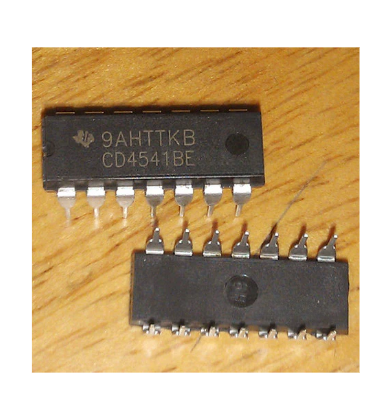

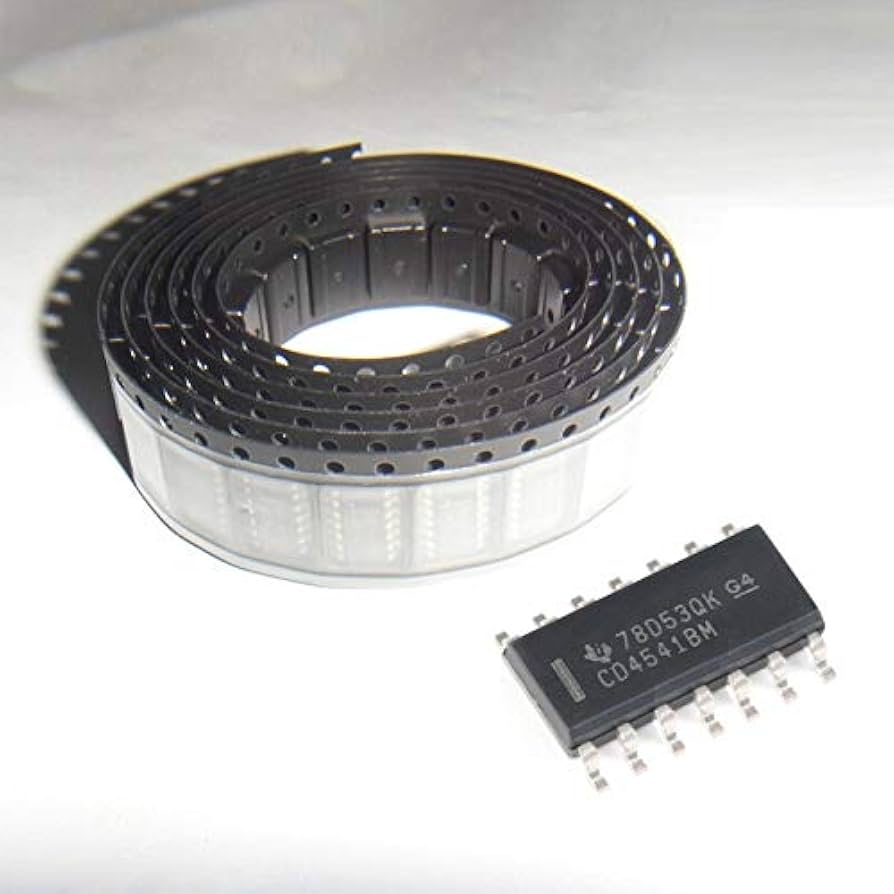
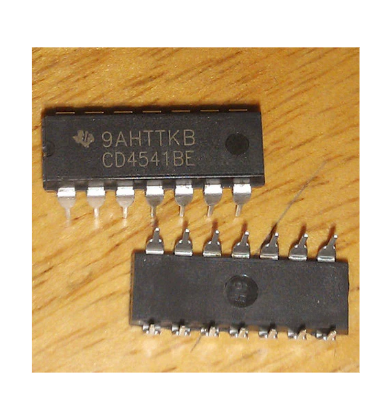




 Wishlist (0 Items)
Wishlist (0 Items) 